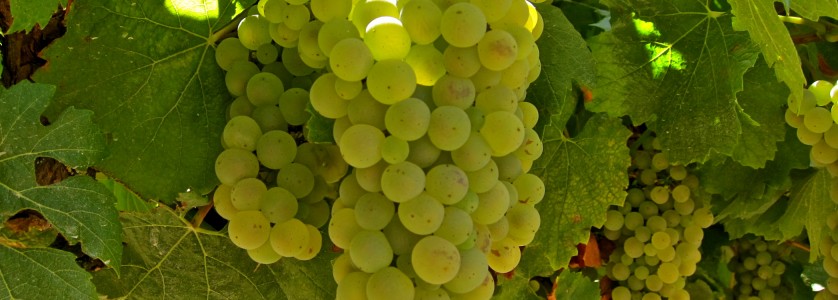Chardonnay


Chardonnay is a grape variety used to make white wine, both quiet and sparkling. It originated in the Burgundy wine region of eastern France but is now grown wherever wine is produced with much succes particularly in the New World of wine's terroirs.
Chardonnay is a green-skinned grape variety used to make white wine. It originated in the Burgundy wine region of eastern France but is now grown wherever wine is produced, from England to New Zealand. For new and developing wine regions, growing Chardonnay is seen as a “rite of passage” and an easy entry into the international wine market. The Chardonnay grape itself is very neutral, with many of the flavours commonly associated with the grape being derived from such influences as terroir and oak. It is vinified in many different styles, from the lean, crisply mineral wines of Chablis, France to New World wines with oak, and tropical fruit flavours. Chardonnay is an important component of many sparkling wines around the world, including Champagne. A peak in popularity in the late 1980s gave way to a backlash among those wine drinkers who saw the grape as a leading negative component of the globalization of wine. Nonetheless, it remains one of the most widely planted grape varieties worldwide, second only to Airén among white wine grapes and planted in more wine regions than any other grape including Cabernet Sauvignon.
A connection was assumed between Chardonnay and Pinot Noir or Pinot Blanc for much of its history. In addition to being found in the same region of France for centuries, ampelographers noted that the leaves of each plant have near-identical shape and structure. Pierre Galet disagreed with this assessment, believing that Chardonnay was not related to any other major grape variety. Viticulturalists Maynard Amerine & Harold Olmo proposed a descendency from a wild Vitis vinifera vine that was a step removed from white Muscat. Chardonnay’s true origins were further obscured by vineyard owners in Lebanon and Syria, who claimed that the grape’s ancestry could be traced to the Middle East, from where it was introduced to Europe by returning Crusaders, though there is little external evidence to support that theory. Another theory stated that it originated from an ancient indigenous vine found in Cyprus.
Modern DNA fingerprinting research at University of California, Davis, now suggests that Chardonnay is the result of a cross between the Pinot and Gouais blanc (Heunisch) grape varieties. It is believed that the Romans brought Gouais Blanc from Croatia, and it was widely cultivated by peasants in Eastern France. The Pinot of the French aristocracy grew in close proximity to the Gouais Blanc, giving both grapes ample opportunity to interbreed. Since the two parents were genetically distant, many of the crosses showed hybrid vigour and were selected for further propagation. These “successful” crosses included Chardonnay and siblings such as Aligoté, Aubin vert, Auxerrois, Bachet noir, Beaunoir, Franc Noir de la-Haute-Saône, Gamay Blanc Gloriod, Gamay noir, Melon, Knipperlé, Peurion, Roublot, Sacy and Dameron.